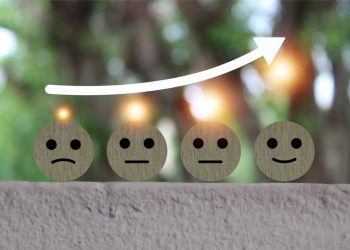By Eric Adler
RISMEDIA, September 13, 2008-(MCT)-On a recent Saturday, 25-year-old Ramsey Mohsen of Fairway, Kan., did something at his parents’ lake house that tens of millions of computer-savvy young people are doing more and more. He took a picture.
And then he took another and another and another and another and another. He took 28 photographs of himself, of his sister, of her new puppy, of himself again, jumping off the top of the back stairs, standing on the dock. Then he posted them to his page on Facebook, the social media website, adding to the 500 photos and 51 video clips of himself and his life already there.
On Flickr.com, a photograph-sharing site, Mohsen, an affable and articulate former DJ-turned-Web site-designer and blogger, had posted 1,100 more photos.
On YouTube, he’d put up nearly 100 personal video clips: Mohsen on site at the “American Idol” tryout. Mohsen on his trip to New York. Mohsen celebrating the University of Kansas’s Final Four victory. Mohsen being pushed down a Costco aisle on a pallet of beer before his annual ugly sweater party.
Sound self-absorbed? Narcissistic? … Just plain fun?!
Think, instead, commonplace, especially among the generation of so-called “digital natives,” who were born and bred during the Internet age.
Over the last five years, scholars say, the meteoric rise of social media sites, including MySpace, Facebook, YouTube and Twitter, has sparked a public explosion in self-documentation, making the “me” in multimedia more prominent than ever.
“I’m not alone by any means,” Mohsen said. “Everyone does it. I would say among Millennials”-the millions of 14- to 28-year-olds born between 1980 and 1994-“this type of on line activity is more than part of day-to-day life, it’s woven into the social fabric.”
Indeed, according to a report released last year by the Pew Internet & American Life Project, at least 93% of America’s teen agers now use the Internet regularly. Of those, at least 58% of teenage girls and 51% of teenage boys have created active profiles on any number of social media sites, where they blog, text one another, share their lives by updating their biographies, videos and photographs.
“This is huge. There has never been anything like this before,” said B.J. Fogg, the director of the Persuasive Technology Lab at Stanford University and editor of a soon-to-be-published compilation, “The Psychology of Facebook.” “We have never had the tools to capture and recover and share our lives like we have today.”
Because the Pew report was done in 2007, it used 2006 data. Scholars agree that many of its numbers are probably far outdated. They estimate that 80% to 90% or more of America’s high school students, college students and a growing number of post-college adults now regularly document and share lives on sites such as Facebook, which claims more than 90 million users, or MySpace, which counts 100 million-plus.
The ability to snap digital pictures and immediately upload them to the sites, they say, is shaping social behavior.
Younger people talk of the “Facebook moment.”
That happens at virtually any outing when someone takes out a digital camera to capture pictures for the expressed purpose of posting them to MySpace or Facebook or some other site and then identifying photos, or “tagging” them, to be sent to friends.
“I almost always have my camera around,” said Alana Henderson, 19, of Leawood, Kan., a musical theater major at the University of Missouri-Kansas City. “I probably have more than 1,000 tagged pictures of myself.”
Her friend and roommate Megan Pasley, 19, of Olathe, Kan., said she has 637.
Bryan LaFave, the third roommate in a group hanging around a coffee shop near campus one recent day, said that few if any people their age ever go out without a camera.
“I take mine everywhere,” said Emily Summers, 15, who was on the Country Club Plaza recently snapping pictures on a night out with nine of her high school friends.
“We even have it in school. We have it at the pool,” said friend Mallory Schulenberg.
Joelle Chow, 15, said that when she and her friends gather at her house, they sometimes do their hair and make up just to make sure they look good in the pictures they post on Facebook.
Certainly, some could easily see the behavior as narcissistic.
Francis Ryan, an American studies professor at Philadelphia’s La Salle University and author of “Drowning in the Clear Pool: Cultural Narcissism, Technology and Character Education,” said the rise of Facebook and MySpace feeds into two strong currents in the American nature.
One is to be communal, the need to belong to a group. The other is to be noticed and be seen as special.
The social media sites do both. Not only do people share themselves with others, Ryan said, but also their photographs and online diaries declare, “I am here. I am me. I am unique.”
Mohsen sees it differently. Instead of self-absorption, he says, he just sees the practice as a powerful technological way for him to share his life with his friends and for his friends to share their lives with him. It’s no different from catching up by phone, or checking out people’s yearbooks or photo albums.
When people look at his Facebook page or read his blog at www.RamseyMohsen.com or view his photographs or videoblogs, he said, they know what he thinks, they know what music he likes, they know what his life is made of.
He sees the mass of photographs as being little different from getting dressed up to go out in public. It’s his public face, what he calls “personal branding.”
Fogg, of Stanford, calls it “image management” and, indeed, suggests it’s one of the prime reasons Facebook and other social media sites have become so powerful.
“It’s the opportunity for them to project an image of themselves to the world, to make an impression,” he said.
The other reasons may be more prosaic.
“One is that they see other people doing it,” Fogg said. “Today, if you choose not to do Facebook in college, you have all but chosen to be a social isolate. We don’t like to admit that our behavior is controlled by what other people do, but in fact it is.
“People see others uploading their relationship status, uploading their photos, revealing their sexual orientation. They see it all around them.”
Beyond that, he said, there is the feedback. Upload a photo or video or opinion on your site, and you hear back from your countless friends. You’ve created an audience. There is affirmation.
“That is very rewarding,” Fogg said. “Without that, none of this would have taken off. You can’t underestimate how rewarding that is for people to get a response about their lives. That really is what is driving it.”
Then there’s the voyeuristic appeal. Many people talk about how the mass of pictures allows them to anonymously “Facebook stalk” friends or acquaintances or even people they don’t like.
“You can be a fly on the wall in someone’s general life,” said Jaime Netzer, 23, a writer and recent graduate of the University of Kansas. But Netzer said she also had divided feelings about her generation’s trend to constantly document their lives.
“When everyone around me is taking pictures,” she said, “I wonder am I missing out on something that’s worth documenting.”
The flip side, Netzer said, is whether in the time you spend taking pictures, you’ve missed out on real life.
“You end up with photos of events that you don’t actually remember,” she said, “because you were too busy taking pictures.”
Ramsey Mohsen said he has had similar feelings. He’s now trying to break away a bit from his computers and his busy social-media life. He’s taken up golf. But, he also conceded: “I bring my camera.”
© 2008, The Kansas City Star.
Distributed by McClatchy-Tribune Information Services.










